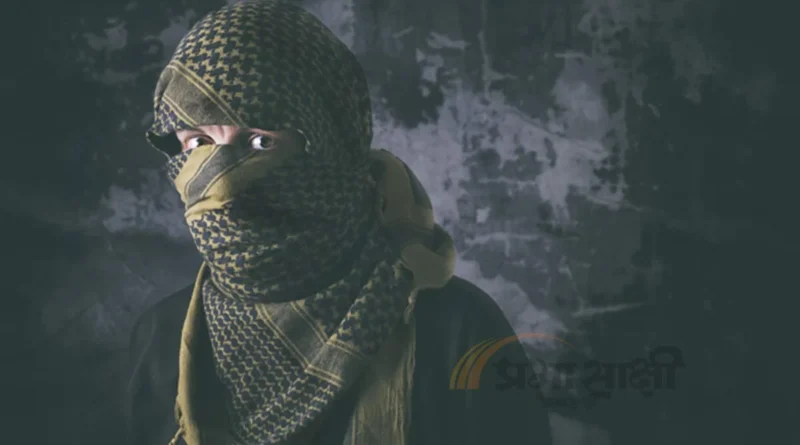US Designates TRF as Terrorist Organization, Exposes Pakistan’s Proxy Warfare in Kashmir
The U.S. Department of State has dealt a major blow to terrorism by officially designating the The Resistance Front (TRF) as a Foreign Terrorist Organization (FTO) and a Specially Designated Global Terrorist (SDGT) group. This move has also unveiled the true face of Pakistan. While Pakistan frequently claims to advocate for the rights and human rights of Kashmiris, it has been exposed for inflicting the most harm on Kashmiris through its proxy organizations.
The TRF, which emerged after the abrogation of Article 370 in Jammu and Kashmir in 2019, has grown into one of the deadliest terrorist organizations in the valley. It comprises operatives from Pakistan’s Special Services Group (SSG) and former commandos. The TRF is a front for the Lashkar-e-Taiba (LeT), a Pakistani-based terror group, and was responsible for the April 22 Pahalgam terrorist attack. In addition to this, TRF has been linked to four other major attacks in the past two years, including:
- June 2024: Attack on pilgrims in Reasi.
- October 2024: Attack on migrant construction workers in the Z-Morh Tunnel in Ganderbal.
- September 13, 2023: Kokernag encounter, resulting in the deaths of a Colonel, Major, and a DSP.
- July 8, 2020: Attack on a BJP leader in Bandipora district, killing him and two family members.
Pakistan’s propaganda machinery portrays the TRF as a “local” militant group, despite it being a front for LeT, intended to make the violence in Kashmir appear more “homegrown.” The TRF was formed in October 2019 with Sajjad Gul as the supreme commander, Mohammad Abbas Sheikh as the founding chief, and Basit Ahmed Dar as the chief operations commander. Both Abbas and Dar were killed by Indian security forces in separate operations in August 2021 and May 2024, respectively. Following these losses, the TRF increased its activities in Jammu and Kashmir, shifting its tactics.
Traditionally, the TRF targeted security forces and political figures. However, by the end of 2024 and the start of 2025, the group shifted its focus to infrastructure projects, migrant workers, and tourists, symbolizing a potential change in its strategy. Intelligence sources have confirmed that the TRF is operating under the direct instructions of the Pakistani military establishment, which is evident from forensic digital evidence and signals tracing back to Muzaffarabad and Karachi.
Pahalgam Attack: A Shift in Strategy
The Pahalgam attack marks a significant change in TRF’s tactics. Five attackers, linked to a TRF unit named Falcon Squad, infiltrated Pahalgam dressed in military attire, carrying military-grade weapons and advanced communication equipment. The attackers specifically targeted Hindu men, checking their names and religious symbols like circumcision, and demanded that the victims recite the Kalma (declaration of faith in Islam). The attackers used cameras mounted on their helmets and employed a hit-and-run strategy before fleeing into the forests.
Authorities have identified Hashim Musa, also known as Asif Fauji, a former Pakistani SSG commando, as the mastermind behind the attack. He was allegedly assisted by another Pakistani national, Ali Bhai. The plot is believed to have been orchestrated by Saifullah Kasuri, a close associate of the declared global terrorist Hafiz Saeed, a senior commander in Lashkar-e-Taiba.
Targeting Tourists: A Strategic Shift
The Pahalgam attack suggests a shift in the operational policy of Kashmiri terrorist groups. They are now moving beyond targeting government officials and settlers, focusing on civilian visitors, especially tourists and migrant workers. This shift seems designed to destabilize the region, dissuade tourism, and deepen communal divisions.
Officials believe that the Falcon Squad, consisting of highly trained local recruits, indicates a growing reliance on decentralized, hard-to-capture operatives, raising concerns about future threats to both regional security and civilian life in Jammu and Kashmir.
Ganderbal Attack: Targeting Development Projects
In the Ganderbal attack, two to three attackers entered a camp armed with M4 carbine assault rifles and AK-47s, opening fire. The attack targeted the “Arab Dollar Tunnel Project”, and the attackers were believed to be focusing on the strategic advantages of disrupting development work. This assault reflects the group’s enmity towards infrastructure projects, viewing them as demographic change and a symbol of India’s federal integration in the region.
Social media platforms like Kashmir Fight Falcon X have increasingly presented non-local civilians, particularly migrant workers and tourists, as “colonizers” involved in Kashmir’s “illegal occupation”. This rhetoric aims to stir further unrest and portray external stakeholders as invaders.
TRF as a Proxy of LeT: The Broader Strategy
The Indian Ministry of Home Affairs officially designated the TRF as a terrorist organization under the Unlawful Activities (Prevention) Act (UAPA) in January 2023. Sources indicate that the TRF is part of Pakistan’s longstanding strategy of rebranding terrorist groups to evade international scrutiny while continuing its cross-border terrorism under the guise of local resistance. The TRF is merely the new face of Lashkar-e-Taiba, and Pakistan’s General Asim Munir is believed to be the mastermind behind this bloody strategy.
In conclusion, the TRF is not just a local threat but part of a broader geopolitical game orchestrated by Pakistan to continue its proxy war against India under the pretext of local resistance, further destabilizing the Kashmir Valley and impacting India’s national security.
Stay updated with International News in Hindi on Prabhasakshi

